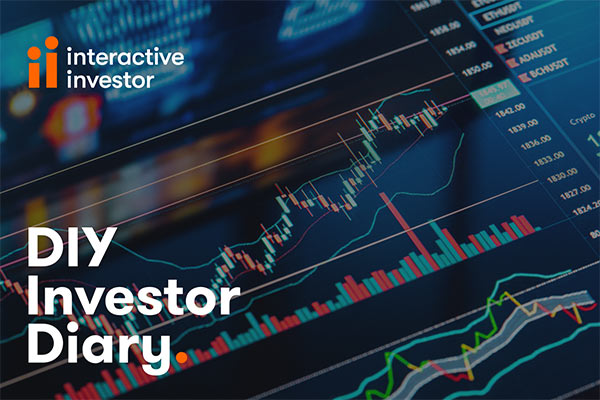How the pros spot value-trap shares with dividends ‘in danger’
Kyle Caldwell runs through the main warning signs the professionals look out for that point to a dividend in danger.
13th September 2023
by Kyle Caldwell from interactive investor

Income-seeking investors are spoilt for choice, with dividend-paying shares no longer the only game in town.
Prior to interest rates rising from the end of 2021 onwards, investors had no choice but to size up equities to procure a decent level of income. However, now that bonds have re-priced in response to rate rises, yields of 4% to 5% are obtainable on debt that’s deemed relatively low risk. For those who are prepared to stomach greater levels of risk, yields of 5% and 6% can be found on both corporate and government debt.
In addition, savings rates and cash-like investments (money market funds) have seen their income returns increase on the back of interest rate rises. The Bank of England base rate has moved from 0.25% to 5.25% over the course of nearly two years.
However, while bonds are certainly attractive again for income seekers, investors who buying individual bonds today, today, and looking to hold them to maturity, are currently accepting a below-inflation income return. In contrast, while there’s no guarantee, dividend-paying equities offer the prospect of inflation-beating returns through a combination of capital growth and dividend returns.
Job Curtis, fund manager of City of London Ord
investment trust, one of our Super 60 investment ideas, observes that as companies grow their profits and their dividends, this provides dividend growth over the long term. However, with bonds “the interest is fixed”.
Speaking to interactive investor, Curtis said: “I think this is particularly important in a period when you’ve got inflation. In real terms, if you’ve got a fixed-rate deposit or bond, and inflation is around 8%, within a year your money has lost 8% of its purchasing power.
“While in an equity fund, you’ve at least got the growth in income, which can alleviate that inflationary effect.”
Drilling down into the dividend
However, a trade-off is that equities are riskier than bonds. The same is true for income-seeking investors, as company dividends can be cut, suspended or cancelled without notice. But with bonds, the income on offer will keep on flowing unless the company falls into financial difficulties.
It is therefore important to drill down into the dividend to assess whether it is sustainable.
Below are some of the main warning signs the professionals look out for that point to a dividend in danger.
A high dividend yield
A high dividend yield looks attractive on paper, but it should be treated with a healthy dose of scepticism.
As share prices and yields have an inverse relationship, a high yield is often a sign that a stock, for whatever reason, is out of favour.
It is therefore crucial to do some digging to check whether the yield on offer is sustainable to avoid so-called value traps.
George Cooke, manager of Montanaro European Income fund, one of interactive investor’s ACE 40 investment ideas, says: “We view high dividend yields as a warning sign more often than not. If you have a dividend yield of 10% or 15%, it’s usually just the market telling you that you’re about to get a dividend cut rather than this is a stunningly great opportunity.”
For Simon Gergel, fund manager of Merchants Trust Ord an attractive yield is important, but does not drive the investment decision.
Gergel said: “We always buy companies where we think we can make a good total return. So, we fish in the pond of high-yielding companies. But once we own them, we’re not concerned whether that dividend is growing fast or not growing much at all.
“We want to buy companies where we think we can make good money, and if we can make good money on the underlying company. Ultimately, we can either get dividend growth from that company, or we can reinvest the proceeds to get dividend growth elsewhere.”
Another thing to bear in mind is that high yields do not mean market-beating returns from a total return perspective – when both capital and income are combined. In addition, dividend growth may be higher for dividend-paying shares with lower yields.
Check the track record for paying dividends
A company’s track record for paying dividends is worth considering. Although a stock that has historically been a generous payer should not be considered a sure bet for dividends continuing to roll in, those businesses which have patchy records should set alarm bells ringing.
However, bear in mind that a dividend track record does not show the fundamentals of a business, such as balance sheet strength and return on capital.
Moreover, to keep the dividend track record going, there’s the risk that some companies will keep on paying dividends for longer than is sustainable, such as through increasing their debt levels to fund income payments.
William Meadon, fund manager of JPMorgan Claverhouse Ord
says that the most important things to check are “balance sheet, cash flow, the barriers to entry and how much the underlying company is growing”.
Cooke adds: “First and foremost the companies have to be high-quality and growing. And we think doing it that way round prevents us and helps to stop us from being seduced by an optically high dividend yield, which then turns out to be high for a reason, which is that the company is declining.”
The The SPDR S&P UK Dividend Aristocrats ETF
UKDV is one way to gain exposure to stocks with long dividend track records. It tracks the 40 highest-yielding UK companies that have increased or maintained dividend payments for at least seven consecutive years. Its top five holdings are
British American Tobacco IG Group Holdings Intermediate Capital Primary Health Properties and Legal & General Group
Payout pledges can be broken
A commitment from the management of a company to maintain a future dividend payment should, in theory, be seen as a positive. However, the reality is that there have been far too many broken promises over the years for investors to bank on such pledges.
During the Covid-19 pandemic, oil major Shell ended its remarkable dividend run by cutting its income payout for the first time since the Second World War.
Direct LineThe firm unexpectedly cut the dividend at the start of 2023, just months after former chief executive Penny James had said it was safe. Following the dividend cut, James stepped down.
In response, Curtis sold down Direct Line, but retained a holding. He explained: “Sometimes when a dividend cut happens, it can be after a period of share price underperformance. And if you sold out of the stock, you’d be throwing out the baby with the bathwater so to speak and doing it at the worst possible moment.
“But, in the case of Direct Line, we’ve reduced the holding quite substantially and so sold more than half our holding because there are other companies in insurance and financials generally which have carried on paying and growing their dividends, so are, in the short term, more help to us.
“But Direct Line has got very good recovery prospects in my opinion. It is a kind of leading insurer in motor and property insurance in the UK and it’s been a very strong brand, so I didn’t really want to sell out of it entirely, so we’ve kept a smaller holding.”
Dividend cover
This is considered a key metric to assess whether a company is in a healthy position to distribute dividends. It is calculated by dividing earnings per share (EPS) by the dividend per share (DPS).
As a rule of thumb, a low dividend cover ratio – around one times or lower – suggests dividends are vulnerable, as a company is using most, if not all, its profits to fund the dividend. A figure of two or more is seen as comfortable because it’s a sign a business is not over-distributing.
Those firms that do hand back more cash than they can afford risk damaging their longer-term growth prospects through lack of investment in the business.
Curtis points out: “It’s very important that companies are also investing in themselves enough for the future, making enough capital expenditure on plants and equipment or their brands because, unless they are investing enough for the future, you won’t get the future growth.
“I should also say that I prefer companies with strong balance sheets. Those companies are much more resilient when times are tough and the economy’s turning down. In that type of situation, companies that are highly indebted are going to be more at risk. They might well be under pressure to cut their dividends.”
Dividend payout ratios
Another thing to be aware of is that some companies have strict dividend payout ratios, which is the percentage of earnings paid to shareholders via dividends.
Some mining companies fall into this camp. As a result, if they make less money, dividends are cut. The sector is not a reliable dividend payer, as dividends fluctuate depending on the performance of the iron ore price.
Debt levels on the rise
When the dividend is being funded out of debt, it is a potential red flag. One way for private investors to work this out is by looking at the free cash flow measure. This takes into account how much money a company has left over once all business expenses have been made, including interest on borrowings.
Those businesses that pay their dividends without resorting to borrowing will have a positive free cash flow figure.
But bear in mind that a negative score does not always mean the dividend is under threat. If money is borrowed cleverly and efficiently, the business will ultimately become more profitable.
Henry Dixon, fund manager of Man GLG Income, one of interactive investor’s Super 60 investment ideas, says that financial leverage is certainly a warning sign that a dividend may not be sustainable.
He says: “Value traps are just such a painful part of the job, and you do everything you can to insulate yourself from that.
“And you try and work out a common theme of value traps and what happens. I definitely would observe that financial leverage can certainly get in the way of realising the value that might be on offer.”


















